#Şehzade Osman
Explore tagged Tumblr posts
Text



This blue and golden kaftan was first worn by Şehzade Mustafa in the fourteenth episode of the fourth season of Magnificent Century.
With the sleeves cut off, the kaftan appears again on Şehzade Osman (later Sultan Osman II) in the twenty-fourth episode of the first season of Magnificent Century: Kösem. The sleeves were shortened once again before it was used on Şehzade Kasım in the second episode of the second season.
#Muhteşem Yüzyıl#Muhteşem Yüzyıl: Kösem#Magnificent Century#Magnificent Century Kösem#Magnificent Century Kosem#period drama#costume drama#historical drama#Şehzade Mustafa#Sehzade Mustafa#Şehzade Mustafa (Son of Mahidevran)#Osman II#Şehzade Osman#Sehzade Osman#Şehzade Osman (Son of Mahfiruze)#Şehzade Kasım#Sehzade Kasim#reused costumes#recycled costumes
16 notes
·
View notes
Text
The Most Beautiful Thing In The World Is Love. - Chapter 2

Book: Dracula A Love Story
Pairing: Mehmed x Lale / Mehmed x MC
Characters: Şehzade Mehmed, Lale Hatun, Sultan Murad,..
Important note:
In episode 5 of Dracula a love story season 4, Sultan Murad tells the story of Osman who marries Sheikh Edebali's daugher.
The names of Osman's wives were mixed up, as they refered to the Sheikh's daughter as "Malhun Hatun", when her name was "Rabia Bala Hatun".
Malhun Hatun was indeed Osman's first wife and mother to the future sultan Orhan, and Rabia Bala Hatun wed Osman later on, becoming his second wife. Together they will have only one son, Alaeddin, who will become Grand Vizir.
While I do not like discrepancy, I have decided to keep Murad's quote as it was in the game, so as not confuse my fellow players.
Still I wanted to provide good informations about Historical figures.
Chapter 2:
The past few days had been most tiresome for the troops. At first, they rejoiced at the surprise that their arrival made on the Hungarians. At loss, they didn’t have the time to gather enough supplies to withstand a siege. But then, both sides started to stall, neither wishing to engage the fight. This could soon cause a problem, as more reinforcements might arrive from Europe; and then, the Ottomans would be the ones besieged, surrounded by all parts.
These thoughts were occupying Mehmed’s spirit as he regained his tent, the second night on the field. While the servants were preparing everything for his ablutions, he continued his train of thoughts, eyeing them absentmindedly.
It was a good thing that the Hungarians suggested a duel: their victory lifted the spirit of the Ottoman troops, and now the Mehter march could be heard throughout the entire valley. This military music would always remind their enemy that the mighty Ottoman army was close, breathing down their neck, and ready to claim their victory on those lands, as they did on many other lands before. Yet something was bothering the young prince: Aslan. He had chosen him for his excellent swordman’s skills, but his father had seemed too happy about his victory.
Mehmed took out his caftan, then his shirt, letting his fingers run along the scar on his lower abdomen. ‘Yes, Aslan is a good fighter’ he thought ‘but even good fighters can let their guard down once in a while.’ He stared at the former slash wound with a thin smile, thoughts of Aslan gradually fading away to be replaced by more pleasant ones. He tried to imagine how the days passed in the palace, while they were away. Her slender figure strolling through the gardens in an attempt to pass the time; maybe the sketches she would draw of the beautiful sceneries. Would she sit on the bench by the pound, in the very gardens he designed, to read some treaties? Or would she write letters, only to throw them into the fireplace in her quarters, unsatisfied with the words she would have chosen? Was she praying for them?
A shadow appeared on Mehmed’s features as he thought. She would be praying for her friends, that was for sure. And write to them as well. His breathing became harsher. But for him, would she pray for him? Would her heart be sized in angst as the days pass without hearing any news from him?
The young man splashed some cool water on his face, not only to wash the sweat and dirt of the day, but also to wash away these thoughts. Thoughts of Lale would make him travel from Cennet to Cehennem in the blink of an eye; she would torment him without even uttering a word, even now, so far away from him.
He quickly finished his ablutions then hurried to dress when his father got announced by one of his personal guards, before welcoming him with a deep and respectful bow.
The Sultan seemed very pleased with the events of the day, and immediately started to engage with his son about them. Mehmed humoured him by replying from time to time, and by agreeing on Aslan’s victory being a sign of Destiny. But his thoughts remained elsewhere, on Edirne, on her.
“Do you recall how everyone laughed at your dream of conquering Constantinople?” his father asked with a thin smile. “As it would turn out, they were mistaken.” This question alone brought Mehmed’s attention back to his father who, noticing the change in his son’s features, continued with a knowing smile. “You’ve surely heard about our empire’s founder, Osman the First…”
Osman Gazi, son of Ertuğrul; founder of the Ottoman Beylik, a small principality in the region of Bithynia that would soon expand into a magnificent Empire to which he would give his name, as well as the Dynasty that his descendants would create.
Of course Mehmed had heard of him; Osman turned a small principality into a flourishing empire, their empire.
“Little was known about him before. But some old documents were recently discovered.” His father continued. “An old epic poem, dating from the time of Osman. In it were described two of his prophetic dreams.”
“What were the dreams?” Mehmed asked with renewed fervour. “Please tell me.”.
Sultan Murad then started his tale of Osman studying under the wisdom of Sheikh Edebali, and falling in love with the Sheikh’s daughter, Malhun Hatun.
Osman wished to marry her, and so, asked Sheikh Edebali for his daughter’s hand. But the Sheikh, judging young Osman unworthy of his daughter, refused.
Osman kept on studying with Sheikh Edebali, and one night when he was sleeping at Sheikh Edebali’s house, he had a dream.
Osman saw himself and his host reposing near each other. From the bosom of Edebali rose the full moon, and inclining towards the bosom of Osman it sank upon it, and was lost to sight. After that a goodly tree sprang forth, which grew in beauty and in strength, ever greater and greater. Still did the embracing verdure of its boughs and branches cast an ampler and an ampler shade, until they canopied the extreme horizon of the three parts of the world. Under the tree stood four mountains, which he knew to be Caucasus, Atlas, Taurus, and Haemus. These mountains were the four columns that seemed to support the dome of the foliage of the sacred tree with which the earth was now centered. From the roots of the tree gushed forth four rivers, the Tigris, the Euphrates, the Danube, and the Nile. Tall ships and barks innumerable were on the waters. The fields were heavy with harvest. The mountain sides were clothed with forests. Thence in exulting and fertilizing abundance sprang fountains and rivulets that gurgled through thickets of the cypress and the rose. In the valleys glittered stately cities, with domes and cupolas, with pyramids and obelisks, with minarets and towers. The Crescent shone on their summits: from their galleries sounded the Muezzin’s call to prayer. That sound was mingled with the sweet voices of a thousand nightingales, and with the prattling of countless parrots of every hue. Every kind of singing bird was there. The winged multitude warbled and flitted around beneath the fresh living roof of the interlacing branches of the all-overarching tree; and every leaf of that tree was in shape like unto a scimitar. Suddenly there arose a mighty wind, and turned the points of the sword-leaves towards the various cities of the world, but especially towards Constantinople. That city, placed at the junction of two seas and two continents, seemed like a diamond set between two sapphires and two emeralds, to form the most precious stone in a ring of universal empire. Osman thought that he was in the act of placing that visional ring on his finger, when he awoke.
“Osman told the Sheik everything about these dreams. Sheik Edebali was amazed and interpreted them as prophecies. The first part of the dream predicted that Osman would establish a vast empire, and his descendants would rule it. The second predicted that one of his descendants would conquer Constantinople.
After this” concluded the Sultan, ���Sheikh Edebali allowed his daughter to marry Osman.” Murad eyed his son with a serious expression on his face.
“If we win this war, Mehmed… You, my son, have every opportunity to fulfil the second prophecy.” This was beyond anything Mehmed had ever hoped to hear from his father’s mouth. Finally, he was seeing him for who he truly was.
“I would do anything for that!” Mehmed heard himself reply immediately, his pulse accelerating at the idea that his father could finally envision such a future for him.
“But remember, Osman was not alone. If it hadn’t been for his wise wife, things could have turned out differently. She was an exceptional girl of remarkable intelligence and a pure soul. She had a significant influence on him and helped him become who he was.”
As his father spoke, Mehmed reflected upon an exceptional girl, who too, helped him change and become who he truly intended to be. The Sultan’s praises for Malhun Hatun echoed in Mehmed’s mind as praises fitted for Lale.
“I hope you’re lucky enough to find a woman like her… Intelligent and pure-hearted, proud and noble. Not just by blood, but in every way.” Mehmed held his breath as he heard these words. He barely dared to move a muscle. Had he fallen asleep and this was just a dream? Could it be true? He looked away to regain some composure, but could not hide the gleam in his eyes. This idea was risky, but he couldn’t keep quiet about it any longer.
“Someone like Lale Hatun.” He finally turned toward his father, his gaze filled with hidden hope and his heart racing in his chest with excitement. Oh he could imagine her already, in her beautiful red wedding bindalli. Finally he had taken a step toward the dream that had long tormented him: marrying Lale.
But the expression on the Sultan’s face announced to Mehmed that these hopes were not shared by his father. Like a man waiting for his death sentence, he watched as his father nimbled his lower lip, annoyed.
“Mehmed, I didn’t expect such a thing to cross your mind. After what happened between the two of you in your youth, I thought you knew there could be no talk of your wedding.”
And just like this, his father had crushed his hopes once more. He felt like the earth had opened underneath his feet; like fire was burning him alive.
No matter how much his father would praise his strength, knowledge and battle skill; he still deemed him unworthy. Once more, he was a little boy pushed away by his father; unloved by him. Unrespected by anyone.
As if things weren’t already terrible enough, his father deemed it wise to add fuel to the fire.
“Besides, I already have a groom in mind for Lale.”
The rest of the conversation seemed like a far away echo that would resonate endlessly in Mehmed’s mind.
Lale, his Lale, promised to Aslan. Aslan, a slave, was deemed more worthy of Lale than the Sultan’s own son! Mehmed clenched onto his collar, trying to grasp some air. But as soon as his father left the tent, his anger could no longer be contained.
Wounded, he trashed the coffee table, the chests and all the furniture within his reach. Tears of rage and pain now ran on his cheeks as he unleashed this maelstrom of emotions. The pain was so deep that he wished to tear his treacherous heart from his chest to stop the hurting.
He hit his chest repeatedly, until, out of breath, he sat on his bed; clenching his head in his hands.
As he rose his face from his hands, his breathing still uneven, he finally noticed something amidst the chaos that was now his tent. A few metres away from him, out of a silken bundle laying on the thick carpet covering the ground, was something resembling a shirt.
Frowning, the Şehzade slowly rose from his seat and knelt in front of it. Testing the material between his index and thumb, he uncovered the rest of the shirt with the other hand.
With wide-opened eyes, Mehmed realised that this was no ordinary shirt. And the scent that it carried was all too dear for him not to understand whom the shirt was from.
He religiously unfolded it, and while tracing the embroidery with his fingers, read the inscriptions.
“ We have opened up a clear victory for you. so Allah may forgive you for any offence of yours you have committed previously or whatever you may do later on, complete His favour toward you and guide you along a Straight Road. And that Allah may aid you with a mighty victory.”
There were more of it, embroidered on the talismanic shirt. The 29 verses of the Surat Al Fath were written, in golden threads, on his shirt. But Mehmed would discover them later, as he would read them studiously before deciding to wear the shirt for the rest of the night, and the following day, for the battle.
But for now, all he could think of was Lale, patiently threading every single word into a shirt, to protect him.
His heart, that seemed wounded to death just a moment ago, was now beating with such joy as if it could jump out of his chest. And through the moisture now settling in his eyes, Mehmed smiled. A sincere and hopeful smile.
So he was still worthy, after all.
---------
notes: Cennet and Cehennem are the Turkish words for Heaven and Hell.
https://en-academic.com/dic.nsf/enwiki/11865382 (I copied the legend of Osman's dream from there).
https://quran.com/48?translations=131%2C85 ( Surat Al Fath 48:1 - 48:3)
12 notes
·
View notes
Note
Hello,sorry for bothering you,I have question there is version according to Sakaoglu(in Bu mulkun Sultanlari) and Alderson that Ahmed I had daughter Zeynep Sultan who had died after 1617 and had died young not in early childhood or in infancy like Esma Sultan,Zahide Sultan,Hatice Sultan and possibly Kosem Sultan(?) In Sicil i Osmani,it's also mention that she had died young and was burried in her father's mausoleum,also there is possible theory that she could be daughter of Mahfiruze,because Osman II had daughter too named Zeynep Sultan and from those names for sultanas doesn't appear later untill Ahmed III.Do you think could be possible that Osman's daughter was named after Ahmed's daughter Zeynep who may have been Osman's full sister? There is also version that Turhan Sultan could have possible 1 or maybe 2 sons who had died in infancy. Some mention that Turhan Sultan had second son Şehzade Ahmed who had died shortly after his birth,it's according to Öztuna based on Turkish Wikipedia(but I don't what excact book)and others mention (Turkish men,Ottoman Women:Popular Turkish historians and the writing of Ottoman women's history,page 206-Ruth Barzail Lumbrosso). Do you know more about it or if it's mentioned that indeed? According to some there is also possibile theory for Turhan Sultan to have anither son,as there is infant sarcophagus of Şehzade Mehmed Sultan Ibrahim'in oglu in the mausoleum of Ahmed I buried next to Şehzade Bayezid also son of Ibrahim I.
Hi! Well, Zeynep has a religious meaning:
Zaynab is the name of a daughter and a granddaughter of the Islamic prophet Muhammad and two of his wives: Zaynab bint Jahsh and Zaynab bint Khuzayma.
Öztuna says Zeynep Sultan died “very little” and was one of Ahmed I’s last children. If he’s right, then he couldn’t have been Mahfiruze’s, as rumours of her death had begun in 1610.
If Öztuna is not right, and she was born earlier, then maybe she was Osman’s younger full sister. What you said about the names is very interesting and could have happened, but as of now we cannot confirm it.
I have checked Turhan’s Wikipedia page and the source to that claim is “Öztuna, Yılmaz, Hürrem Sultan, Ötüken Yayınevi, İstanbul, 1978. (isbn=9754371415)”. The ISBN code corresponds to “Büyük Osmanlı Tarihi Osmanlı Devleti'nin Siyasi Medeni Kültür Teşkilat ve San'at Tarihi (10 Cilt)”, which is not a work I own. I do have several books of Öztuna, though, and this claim wasn’t reiterated in them. According to him, Turhan was the mother of Mehmed IV and Beyhan Sultan.
Still per Öztuna, these are Ibrahim’s children who died in infancy:
Şehzade Murad (22.3.1643-16.1.1644), buried in Ahmed I’s mausoleum
Şehzade Osman (8.1644-1646), buried in Ahmed I’s mausoleum
Şehzade Bayezid (1.5.1646-8.1647), buried in Ibrahim’s mausoleum
Şehzade Cihangir (14.12.1646-1.2.1648), buried in the mosque of Ahmed I
Şehzade Orhan (10.1648-1.1650)
Şehzade Süleyman, buried in Ahmed I’s mausoleum
Şehzade Ahmed, born and dead in 1642, buried in Ahmed I’s mausoleum
Şehzade Ahmed (2), born and dead in 1642, buried in Ahmed I’s mausoleum
Safiye Sultan, buried in Ahmed I’s mausoleum
Hatice Sultan
I don’t know how accurate this list is.
As for Barzilai-Lumbroso's dissertation, on page 206 there's nothing about a Şehzade Ahmed born to Turhan:
Turhan Sultan's transformation from a 14 year old Russian captive, presented to Kosem Sultan who had been the Valide Sultan at the time, to a powerful valide herself. Kosem was concerned that Sultan Ibrahim (1640-1648), who was considered mentally unstable, was the last male descendent of the dynasty, and "began to introduce a slave girl to the sultan every day for the purpose of producing a son. She gave Turhan to Sultan Ibrahim after a short training [period]. Turhan was a very beautiful attractive girl. Tall and well developed, her body was white, her eyes blue, her hair was reddish yellow... Turhan tied herself to sultan Ibrahim with her intelligence and coquetry…" Turhan, however, soon lost her favorite position, as Ibrahim became addicted to women. Feeling the Sultan neglected her and her son Mehmed she "attempted to argue with her husband.. .at the head of the pond. But the sultan's daughter took Turhan's child from her arms and threw him to the pond. The heir to the throne, Mehmet, almost drowned and died. Turhan Sultan saved her child with difficulty [and] withdrew from public life and began to live quietly." She returned to the historical scene, we are told, upon becoming Valide Sultan with her son's ascendance to the throne in 1648, only to find Kosem unwilling to give up her powers. The bitter struggle that ensued between these two women ended with the strangling of Kosem, usually attributed to Turhan, who then acquired absolute rule of the harem.
The only Şehzade Ahmed mentioned throughout the dissertation is Gülnuş's son.
4 notes
·
View notes
Text
The show is kinda vague about it but I can assume that despite being born before his sultanate, Ibrahim's son Osman with Zarife is entitled to the title of Şehzade, right?
The son he is based on had the title according to wikipedia. However, we all know how reliable wikipedia can be on non-English and especially non-Western historical articles. So if anyone knows anything about this I would greatly appreciate it. Does Peirce maybe have something in her book on this?
9 notes
·
View notes
Text
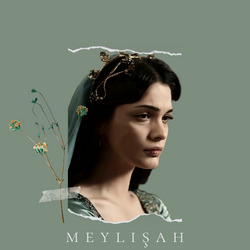

Meylişah Hatun foi a consorte favorita de Osman II — embora não tenha recebido o posto de Haseki — e mãe de Şehzade Ömer, o filho mais velho do sultão.
15 notes
·
View notes
Text

~Mahfiruze~
Mahfiruze was the mother of first - born son (Osman) of Sultan Ahmed I
She was choosen by Handan and Gevherhan Sultanas.
Altough, the mother of the second-born son, Mahpeyker Kösem recived the Haseki Sultan rank and thus Ahmed made clear that Kösem was the favorite consort, Mahfiruze didn't fell out of favor. It is possible that Mahfiruze gave birth to Şehzade Çihangir in 1609. And for sure she gave birth to şehzade Bayezid in 1612. Mahfiruze disappears from harem registers after Bayezid's birth. She possibly died due birthcomplications. Some historians suggest that she was alive during Osman's reign and died in 1629, but there is no proof that Mahfiruze was Valide Sultan.There was a rumor that Mahfiruze was beaten and exiled for irritating Kösem but it seems unlikely that a royal mother,the mother of the first-born prince would be treated so disrespectfull.The main problem of Osman II who ascended as a young boy was that he didn't have a valide who could advise him. During his reign, Osman's wetnurse ruled the harem! Even if the rumor was true, that Mahfiruze was exiled, Osman II as the current Sultan could always recall her back to the palace! Mahfiruze is burried in Eyüp Sultan Mosque and not in Ahmed's Complex, that also suggest that she died in 1612 because the complex was finished in 1616. In 1618, when Osman ascended the throne, he built a tomb for her.
youtube
13 notes
·
View notes
Text
Yes, it's time to talk about all the people Sultan Murad lost.
⏭️ Will do All the people Sultan Suleyman lost next.
And I will not mention his brother's death because those were not his fault. (Osman's and Mehmet's)
------------------------------------------------------------------------------
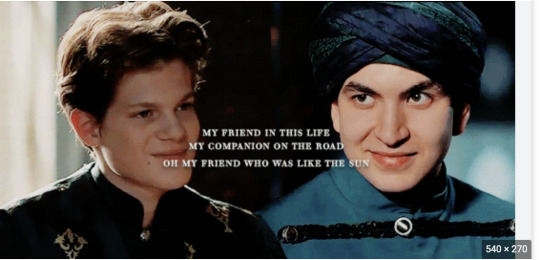
👦🏻Musa Çelebi, his best friend (and lover) ➡️He died in a rebellion and Murad could do nothing. Their story is heartbreaking. ❌Only death in this list is that definitely not Murad's fault but also probably the death Murad blames himself the most.
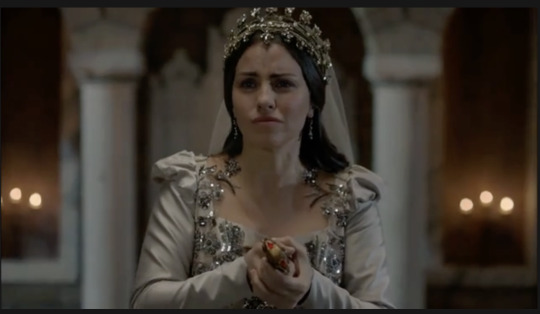
👸🏻Gevheran Sultan, his sister ➡️Murat first killed her husband and then forced her to marry his mother's secret lover. She committed suicide at her wedding. ✅Murat's fault, also can be Atike's fault, and also can be Silahtar's fault depending on where you look.

👸🏻 Ayşe Sultan, his wife number 1 ➡️ She killed herself after finding out Murad had ordered her death. Murad decided to kill her because she was the reason Farya lost her baby and the giant fire in the capitol. ✅Definitely Murad's fault. Maybe Farya can share a little of the blame since she informed Ayşe of her pending demise but definitely 95 percent Murad's fault.
➕
👸🏻🤴🏼Murad's son and daughter ➡️Ayşe poisoned them. ✅Still Murad's fault. Ayşe was desperate and I think she thought Murad would harm their son in the future and since she wasn't going to be able to protect them, she chose to take her children with her. This wasn't an act of selfishness or desire to get even with Murad. She just wanted to protect them from Murad's cruel side.

🤴🏻Şehzade Beyazıd, his brother ➡️He got executed on Murad's orders in the palace, in his home. ✅❌Again partly Murad's fault, partly Gulbahar Sultan's fault. Murad shouldn't have made him kill his lover, shouldn't have made him feel like he could kill him any second. Gulbahar on the other hand made everything possible for her son to die. If she had just waited, Beyazıd would have ascended to the throne regardless.

👸🏻Farya, wife number 2 ➡️Kosem killed her before this though Murad had tried to kill her but couldn't, after finding out she was pregnant. ❌✅Kosem's fault, but Murad had already tried to kill her... sooo I don't know?
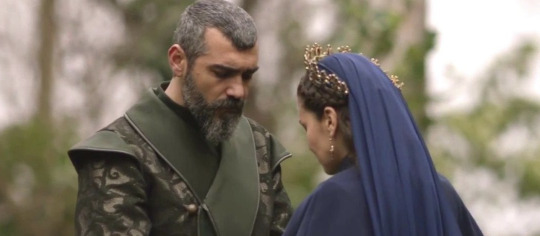
👦🏻Silahtar Mustafa, his best friend ➡️Kosem killed her. ❌Don't like him. Don't care. Wasn't Murad's fault.

🤴🏻Şehzade Kasım, his brother ➡️Murad ordered his death after Kosem tried to dethrone him and give his empire Kasım ✅❌ Kosem's ambitions. Murad's unreasonable hatred towards his mother. Both are equally guilty.
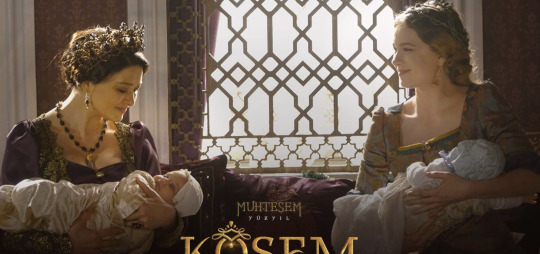
🤴🏻🤴🏻Şehzade Selim and Şehzade Suleyman, his sons ➡️Murad's sons. They died due to force contamination by the plague. ✅It's Murad's fault. For not killing Gulbahar, for killing Beyazıt, for failing to keep their mother Farya alive and for not listening to Kosem.

👑 Sultan Murad, himself ➡️He died because he refused to listen to his mother, he was cruel and didn't listen to doctors and kept drinking. Also, all the deaths I mentioned above *might have* affected him and his health. ✅Definitly his fault
#magnificent century#magnificent century kosem#mc: kosem#kosem sultan#muhtesem yuzil kosem#muhtesem yuzyil#sultan murad#ayse sultan#kösem sultan#magnificent century kösem#sehzade bayezid
14 notes
·
View notes
Text
…SEVGİLİM İHANET…
Kelimelerin hastalıkları varsa eğer,”ihanet” mutlaka cüzzamlı olmakla suçlanmıştır.Oysa, soluğumuz kadar yakındır da biz onu bambaşka yerlerde ve kendimizden çok uzakta bilmeyi yeğleriz.İhanet hayatımızın ta kendisidir,dikkatli bakın, göreceksiniz.
İhanet daima iki uçlu.Gerçekleşmesi için bir muhatap gerekli ve bu yanıyla aşka benziyor.Bu yüzden değil mi ki ihaneti yaşayanlar,büyük aşkları yaşayanlar kadar ünlü ve daima çift isimle anılıyor bu öyküler.Habil ile Kabil söz gelimi.Leylâ ile Mecnun .En trajik olanı galiba İsa’nın son akşam yemeği ve İşte insan. Hıristiyan batıda her şey bu çok eski ihanetin etrafında döner ve çarmıhlar artık daima omuzlardadır.Sezar’ı asıl öldüren yediği hançerden daha çok Brütüs’ün,olmaması gerektiğine inandığı bir yerdeki mevcudiyetini görmesidir.Genç Osman için de öyle. Evvelâ sarayının kapısını emanet ettiği bostancılar ardına kadar açarlar bâb-ı hümayunu ihtilâlcilere,ardından o kadar güvenerek sığındığı Yeniçeriler emanete ihanet ederek alıverirler “Osman Çelebi”nin canını.Gerçi Yeniçeriler çok çaba sarf etmişlerdir ama artık kaldırılmış bulunan 28.ortanın adı yoklamalarda her okunuşunda yeri göğü inleterek yok olsun diye bağırmaları bile alınlarındaki bu ihanet lekesini temizlemeye yetmez. Esasen Genç Osman’a ihanet edenler arasında kısacık saltanatında tutulan güneş ve yüzlerce yıldan beri ilk kez donan Boğaz sularının da kendine özgü bir yeri olması gerek.Halk, ölümüne o kadar çok ağlayacağı padişahın ,sağlığında uğursuzluğuna inanmıştır.
Osmanlı’yı kuşkusuz çok az şey Kırım Hanı Murad Giray’ın Viyana kapılarındaki ihaneti kadar yaralamıştır.Üstelik Giray, bilerek yapmaktadır:Bilirim,dine sığmaz,ihanettir cümlesini sarf etmiş olması bile tutmakla yükümlü bulunduğu köprüyü müttefik kuvvetlere hoyratça açmasına mani olamaz.
Osmanlı’yı çokça meşgul eden eşine az rastlanır bir başka ihanet de Abdülmecid’in dördüncü ikbali Serefraz’ın yarattığı ve neredeyse bir milli gaileye dönüşen “aile faciası”dır. Fazlasıyla kıskanan ve kıskanılan bir kadın olan Serefraz, Dolmabahçe’den ayrılarak Yıldız Kasrı’na yerleşmiştir. Sık sık kasra gelen Abdülmecid’i içeri almakta çok cömert davranmayan dördüncü ikbal üstelik Küçük Fesli lâkabıyla tanınan bir Ermeni delikanlısının aşkına karşılık vermektedir.Hanedana mensup bir kadının açık ihaneti özellikle sarayı çok rahatsız eder.Ailesi tarafından Adalar’a kaçırılan delikanlının Sultan’a duyduğu aşk yüzünden tekrar İstanbul’a dönmesi ise saray mensupları tarafından öldürülmesinden başkaca bir sonuç vermez.Ailesi delikanlının İngiliz,Fransız ve Rus sefaretlerine baş vurarak takibat açılmasını isterler ve mesele İstanbul’u uzun zaman meşgul eder.Bazı kaynaklarda rastlamamıza rağmen bu hikâye oldukça inanılmaz.Asıl inanılmaz olansa bunca hadiseden sonra Serefraz’ın hâlâ padişah nezdindeki kıymetini muhafaza edebilmiş olması.
İhanet Osmanlı hanedanından hiç uzak değil.Bütün saraylar kadar Osmanlı sarayının da içinde.Yavuz’un kızı Fatma Sultan, bir kişiye düştüm ki beni kelb hesabına saymaz…bir hil‘atini görmedim,bir kaftanını giymedim.Dul avret gibi dirilürüm cümleleriyle evliliğinin ve düşlerinin ihanetine uğradığını ,çok sade bir lisanla ve döneminde her hangi bir genç kadının yapabileceği tek şeyi yaparak babasına aktarır.
Fakat muhteşem ihanetleriyle Kanuni yine -bir Osmanlı trajedisi varsa- baş roldedir.İlki elbet Şehzade Mustafa etrafında biçimlenir.Nizam-ı âlem uğruna şehzade katline izin veren kanunname bir yana,Mustafa’nın katli esnasında Kanuni’nin başını çadır aralığından uzattığı rivayeti ve bunu böyle de gösteren minyatür asıl ihaneti vurgulamakta.Ve ihanete tepkiyi.Az rastlanır bir düğünle Kanuni’nin resmi eşi olmayı çok kolay başaran ve vak’anüvislere bakılırsa nikâhtan sonra muhteşem kocasının ihanetine hiç uğramayan Hürrem’in Kanuni’yi bu ihanete hazırlaması çok kolay olmamış olmalı.Ama aynı şey sadece ecel celâlilerinin aldığı Mustafa Han ile sınırlı kalmayacak ve Hürrem, isminin başındaki makbul sıfatı kısa zamanda maktul’e dönüveren İbrahim Paşa’nın öyküsüne de girecektir. Makbul İbrahim Paşa , damatların başka kadınlarla düşüp kalkması katiyen yasaklandığı halde ;Yavuz’un kızı,Kanuni’nin kardeşi gibi bir sultan olan eşine ,Muhsine adlı bir kadınla ihanet etmektedir.Kuşku yok ki,İbrahim’in sonunun hazırlanmasında bu ihanetin payı hiçti.O, seher semasında çokça ışık saçmaya başlayan bir yıldızcıktı ve muhteşem bir güneşin kaçınılmaz ihanetine uğradı.Her türlü ihtimale açık bir ikbal yolunu ayakları dibine sererken daha başlangıçta Kanuni , İbrahim Paşa’ya , kendi sağlığında bir zarar gelmeyeceğine dair yemin etmişti.Bu yüzden katline karar vermesi çok kolay olmadı.Kanuni hakkında bir eser sahibi bulunan Fairfax Downey’e bakılırsa, uyuyan kimse hayatta değildir,uyku ölüme benzer ve insan o esnada hayatla kendisini bağlayan her hangi bir bağdan müberra bulunur mealindeki ayetden hareketle İbrahim
Paşa, Kanuni uyuduğu bir esnada maktul edildi.Fakat Paşa kim bilir kendisini ölmeden önce öldüren bu ihanete uğradığı esnada,Kanuni’nin uyumakta olduğu yan taraftaki odasında aniden uyandığı ve onu Hürrem Sultan’ın teskin ettiği rivayet olunur.
Edebiyatımız,tümüyle sanat ve edebiyat ihanet güzellemeleriyle doludur.En masumları Suat ve Necip’tir kuşkusuz ve Eylül bir ihanetin öyküsü. Duygularda da kalsa ihanetin kirinin mutlak temizlenmesi gereği Mehmed Rauf’u da etkiler.Romanın sonu Mehmed Rauf’un yapabileceği en uygun şekilde gelirken ve o kadar acıdığımız ve anladığımız dahası masumiyetine tanıklık edebileceğimiz Suat ve Necib’in günahını bu dünyada ateş temizlerken ,biz galiba hangisinin daha az dürüst olduğunu düşünmek zorunda kalırız : Romanın kuralarının mı,yaşamın kuralarının mı?
İhanetin ism-i faili sabıkalı bir kelime:Hain.Ama ihanetin ism-i faili hain ise eğer bütün o Lady Makbetler,Fintenler,Therese Raquınler, Bihterler’le birlikte bizzat yazarına göre göre içindeki mücadele herhangi bir meydan savaşında bir komutanın verdiği mücadeleden daha az olmayan Vadideki Zambak’ın Henriette’i ,Halide Edib’in Seviye Talip’i,Suat ve Necip ,oyunu toplumun kurallarına göre değil de kendi vicdanının ve erdeminin kurallarına göre oynamaya kalktığı için kaybeden Anna hep hainlerdir.Bu iki grubu ayıran ve onları gözümüzde bayağı veya masum kılan şeyse,yazarın bakış açısından başka bir şey değildir çoğu kez.Çünkü yazar,bütün düşüncelerimizi yönlendirebilecek bir büyücüdür.
Anna Karenina romanı karlı bir günde ve bir tren istasyonunda başlar.Bir başka karlı günde ve bir başka tren istasyonunda biter.İlkinde Anna,toplumun saygıdeğer bulduğu sadık bir eş,iyi bir annedir.Ve çok güzel bir kadın.Sonunda ise, aristokrat Rus toplumunun gizlice yaşanmasını rahatlıkla onayladığı yasak aşkını, meşru zemine çekemediği noktada , gizlice yaşamayı onuruna yediremeyerek açıkça yaşadığı için dışlanmış bir kadın.Artık iyi bir eş ve iyi bir anne değildir.Ama yine çok güzel bir kadın.Kendi güzelliğinin ihanetine uğrayacağı yılların hızla yaklaştığının farkında,usulca bırakır kendisini bir trenin tekerlekleri altına.Çünkü güzellik ihanet eder ve doğrudur kadının iki kez öldüğü.
Tolstoy,Anna Karenina’yı içindeki Anna Karenina’nın aynı olarak anlatabilmiş midir,bilinmez ama kaç yazar,kaç şair dil’in kendisine ihanetinden müşteki değildir?Kuşkusuz hiç. Hamid’in yakalayamadığı,ancak susmak veya pek karanlık bir şey söylemek olarak tanımladığı bir şiir,dilin ihanetine karşı geliştirilmiş bir müdafaa maskesi değil midir?Akif,ağlarım ağlatamam hissederim söyleyemem /dili yok kalbimin ondan ne kadar bizarım mısralarını ağlarken , Orhan Veli anlatamıyorum çığlığıyla anlatmaya çalışırken hep bu ihanetten müşteki değil midirler?Haşim şiiri anlaşılmaktan ziyade duyulmak zeminine çekerken,Ahmet Cemil şiir lisanını baştan ayağa bir insan,adeta konuşan bir ruh olarak tanımlarken aynı şeyi söylemiyorlar mı?Şiire kadar uzanmaya gerek yok.Derdimiz hep anlatamamak ve anlaşılamamak değil mi?Ben öyle demek istemedim cümlesi ile başlayan boğucu koridorların aşılması ne kadar zordur.Ardından gelen böyle demek istedimler de daha fazla ifadeye muktedir değildir. Üstelik bize hep ihanet eden dile rağmen bizi en iyi anlayacak olanı beklemiyor muyuz sürekli?Ve bizi en iyi anlayacak olanı bulduğumuzu zannettiğimiz her defasında yeni bir ihanete hoş geldin demiyor muyuz?Ve o her defasında yanlış kişi çıkmıyor mu?
Gerçek şu ki ,kalplerin dili olsaydı,dilin ihanetine uğramadan birbirlerine daha çok şey anlatabilirlerdi.Belki Cocteau’nün bahsettiği gibi bir şairi yanlış anladığımız için sevmekten vazgeçebilmemiz için de, Paul Eluard’ın görüşünün gerçek olması ve bizim artık kelimelere ihtiyaç kalmadan şiiri kafa ile okuyabileceğimiz günlerin gelmesi gerekli.Ama galiba o zaman da ne şiir kalır,ne nesir.
Sevgilim dil’in ihaneti,sevgilim şiir çünkü.
Ve sevgilim ihanet.
Sevgilim ihanet,çünkü hayatın kendisi bir ihanete dönüşür yüzümüzde ter damlaları belirdiğinde ve ayaklarımız suya değdiğinde.Bir de bakarız ki birileri,bizimle hiç ilgisi olmayan birileri bizim için enine boyuna ölçerek hem de, bir oyun hazırlamışlar ve al demişler,yaşa,işte senin hayatın.Sesleri ne kadar ılık ve inandırıcıdır oysa.Ne kadar güven verici.Ve biz ayaklarımız suya değecek kadar kısa geçen bir zaman içinde,hayatımızın ihanetine uğradığımızı fark ederek çığlıklar atmaya başlarız.Bu çığlıklarımızı pek de ciddiye almayarak ,yaşıyor ve tahammül edebiliyorsan senindir biçimindeki imalarını dostun ciddiye ne kadar alsak da,içimizdeki fotoğrafın dışımızdakinden farklı olduğu gerçeği hiç bir zaman değişmez.
Önce anılarımız ihanet eder bize,teker teker bırakıp giderler.Her ihanet bir terk ediştir çünkü.Üstelik ne kadar kendisi olarak kalacağını vaad etse de ne dönen aynı kalır,ne bekleyen.Öyleyse her gidiş bir ihanettir,her ihanet bir gidiş.
Baharla yorumlamaya kalkarız hayatı kimileri.Baharın kendisi de bütün ihtişamına rağmen koskoca bir ihanete dönüşür.Beşir Ayvazoğlu,her ne kadar çiçeklerin faniliği onların bizi mutlu eden güzelliklerinin garantisidir derse de,felsefi boyutta sağlam duran bu görüş, saltanatını ilân eden duygu olunca,o kadar ikna edici değildir.Çok kısa bir zamana sığdırılmış bir gül fırtınası,siz her ne kadar bir güle dönüşebilmeyi mantıksızca ve çılgınca bekleseniz de geçer gider.Mehtabı ve yıldızı da terkisine alarak.Kent git gide küçülür,yok olur.Geriye ne bahar kalır,ne gül,ne şiir.
Hafızamızın ihaneti de hiç zor değildir.En gerektiği anda dilimizin ucuna geliveren bir iki mısraın sislendiği veya tümüyle silindiği anlar ne acıdır.Veya her anını ve görüntüsünü hıfzetmeye,zihnimize kazımaya çalışsak da çok sevgili bir beraberlikten geriye kopuk cümleler ve görüntülerle salt bir duygu yumağından başka bir şey kalmaz.Üstelik o duygu yumağı da yeteri kadar açık değildir ve bir gün,ve bir gün silikleşen bir hayali de beraberine alarak sessiz sedasız çekip gider.
Hayret bile edemeyiz.
Yüzümüzün ve bedenimizin ihaneti hiç gecikmez.Her gün aynada gördüğümüz o çehrenin on yıl önceki biz olduğuna kimi inandırabiliriz?Dahası on yıl sonraki biz de bu değilizdir.Hiç gecikmez yüzümüzün ve bedenimizin ihaneti. Cemil Meriç’i gözleri terkeder,Beethoven’i kulakları. Son ihaneti kalbimiz yapar.Bir gün,hiç nedeni yokken bir gün usulca duruverir.Oysa kul yapısı bir cihaz hâlâ ses vermektedir veya şairin dediği gibi kolumuzdaki saat hâlâ işlemektedir .
Üstelik sevgilimiz de ihanet eder bize.Aniden,belki sebepsiz ve ne kolayca başka ve tanınmayacak bir şeye dönüşür.Artık o gitmiştir ve yok olmuştur.Padişahlar cariye çıkar , cariyeler halayık.Oysa biz ona gelebilmek için ne çok şey terk etmişizdir.Bir başka deyişle ne çok ihanet etmişizdir.
Sonra aşkın kendisi .Uğrunda karşılıklı ihanetlere kalkıştığımız ve katlandığımız aşkın kendisi.Hiç zor değildir ihaneti.Hiç bitmeyeceğini sandığımız,bizi var ettiğine inandığımız,Cemil Meriç’in ifadesiyle gizlideki dörtte üçümüzü görünür kılan aşk hiç sebepsiz,hiç ölmeyeceğini sandığımız bir yerde bizi arkamızdan bıçaklar ve usulca çekip gider. Birden gözümüzdeki perde kalkar,bütün çirkinlikler ve çıplaklıklar görünür,cennetten kovuluruz.Utanç kalır geriye,pişmanlık.Oysa aşk pişman olmamak diye tanımlanır.Şarkılar ihanet eder,eskisi kadar güzel değildirler.Şiirler yere yığılır birden,kanatları kopar gecenin.
Rüzgâr küçülür,yağmur fazlalık gelir bize.
Ve ışık söner.Geride kalan her şey sarıya boyanır .
Ama ihanetin bir rengi varsa mutlak gri olmalıdır.
Dostların ihaneti kadar hiç bir şey acı değildir.Ve nedense hep de böyle olur ve biz ,bize en son ihanet edeceğini sandığımız kişinin ihanetine uğrarız ansızın.Artık bir parça Sezar olmuşuzdur.Bir yıldızlar kalır geriye,onlar da gözyaşlarının sıcaklığını duyamayacağımız kadar uzaktadırlar.Oturup hem kendimiz hem yıldızlar için ağlarız,göz yaşlarımız tükenir.Dostların ihaneti kadar hiç bir şey acı değildir çünkü.Hocam Kaya Bilgegil’in kim bilir sigarasına hitaben söyleyebilmek için kaç dostunun ihanetine uğraması gerektiği şu mısrada olduğu gibi:
Zehir de olsan insanların ihaneti kadar acı değilsin.
Fakat en korkuncu,en dayanılmazı kendi kendimize ihanetimizdir.Kendi kendimizi hiç terk etmeyeceğimizi sanırken bir gün bakarız ki tükenmiş,yok olmuşuz.Eski doğrular terk edilen doğrulardır.Yerine koyulacak yeni doğrularımız varsa bir hainizdir,o da yoksa sadece bir hiç.Oysa yanı başımızda hiç dönmeyenler,dönse de tükenmeyenler bahar goncaları gibi boy vermektedirler ve kentin sokakları sabahın saat sıfır dörtlerinde yeni şarkılara ve şiirlere gebedir.Uyku bizi kollarına çeker.
Uyku.
Sevgilim uyku.
CÜMLE KAPISI - NAZAN BEKİROĞLU

2 notes
·
View notes
Photo

Abdülmecid Efendi Şeyh Sivasi
On altıncı asrın sonlarıyla on yedinci asrın birinci yarısında, İstanbul’un en büyük şöhretlerinden biri olan bir Halveti şeyhidir. Halveti tarikatının Şemsiye kolunun kurucusu olan Sivaslı Şemseddin Efendi’nin kardeşi, “Tuhfetül Mülûk” ve “Ziyaiyyei Cami” şaritû şeyhi Muharrem Efendi’nin oğlu ve meşhur şeyh Abdülahad Nurini’nin dayısı ve mürşididir. 1563 (H. 971) tarihinde Zile’de doğdu, ilk tahsilini babasından aldı ve yedi yaşında Kur’an’ı hafız oldu. Tahsil, sülük ve terbiyesini amcası Şemseddin Efendi’den tamamladı. Devrinin ünlü şeyhinin yanında 1596 (H. 1005) tarihinde Eğri seferine katıldı ve orada ölen Pirizade Veli Efendi’nin yerine Zile’deki Halveti dergahına şeyh oldu. 1604 (H. 1013) tarihinde Sivas’taki dergahın ikinci postnişini ve amcası Receb Efendi’nin ölümü üzerine de Sivas’taki Şemsî dergahına şeyh oldu.
İlim ve irfan yolundaki ününü duyan Üçüncü Mehmed tarafından bir hatt-ı hümayun ile İstanbul’a davet edildi; büyük şehirde ilk vaazını Ayasofya Camii’nde verdi ve kısa bir süre de bu mâbedin civarında bir evde oturdu. Daha sonra, kendisine intisap eden ve zamanın Reisülküttabı Lâ’li Efendi tarafından hediye edilen Eyyub Nişancaaındaki bahçeye yerleşti. Kızlarağası Mehmed Ağa’nın Çarşamba’da yaptırdığı Mehmed Ağa zaviyesine şeyh oldu Private Tour Istanbul.
Şeyhülislâm Sun’ullah Efendi tarafından cami haline getirilen Atpazarındaki Hüsambey Mescidi’ne de Cuma vaizi tayin edildi. İstanbul halkının vaazlarına gösterdiği büyük ilgi üzerine birkaç ay sonra Şehzade Camii’ne, bir süre sonra da Sultan Selim Camii’ne Cuma vaizi oldu. Sultan Selim civarında bir Sivaslı dergahı ile mescid yaptırdı. Bugün bu mescidin yeri Darüşşefakânın avlusuna katılmış bulunmaktadır; yıkılmış olan dergahtan da duvarı yarı çökmüş bir mezarlık kalmıştır. Sultanahmet Camii yapılırken “Temel şeyhi” olan Abdülmecid Efendi, temel taşı konulurken dua ettiği büyük mabedin halka açıldığı gün de ilk Cuma vaazını vermiş ve ölünceye kadar bu vazife üzerinde kalmıştır.
Üçüncü Mehmed, Birinci Ahmed, Birinci Mustafa, Genç Osman ve Dördüncü Murad devirlerinde ilim ve irfanı, fazilet ve kemaliyle büyük bir nüfuz ve hürmete mazhar olan bu din ve tasavvuf âlimi, mühim işlerde padişah ve devlet erkânı tarafından fikir ve reyine başvurulan bir sima idi. Kara yazıcı ve Uzun bölükbaşı isyanlarının bastırılmasında hükümete faydalı tavsiyelerde bulunmuştu. Dördüncü Murad’a Bağdat’ın İranlılardan geri alınacağını önceden bildiren kişi olmuş, padişah sefere çıkarken de Hazreti Ömer’in kılıcını beline kuşatmıştı.
Yüksek bir medeni cesaret sahibi idi; gördüğü yolsuzlukları açıkça söylemekten çekinmezdi. Birinci Ahmed’e sunduğu manzum bir şikâyetnamede, bu genç hükümdara memleketin ahval ve idaresinin bozukluğunu acı ve sert bir dille anlatmış, başarı için kendisine adalet ve meşveret tavsiye etmişti. Aşağıdaki satırlar, bu manzumeden alınmış beyitlerdir:
“Şeh-hü, mülkiyyeti kirişli, münşiba adem mi Bunu, dinli devlete layık nedir, ey fulûri, kinim.”
0 notes
Text
Denizli’nin konuştuğu düğün

Denizli siyasetinin önde gelen isimlerinden Gelecek Partisi İl Başkanı Aykut Yıldırım ve Fazilet Yıldırım çiftinin kızları güzellik uzmanı Vildan ile Karaca Pastanelerinin sahibi Nazan Türk ve Bekir Türk çiftinin oğulları işletmeci Berkay Türk dünya evine girdi.

Denizli’de Gelecek Partisi İl Başkanı Aykut Yıldırım’ı kızı güzellik uzmanı Vildan Yıldırım ile Karaca Pastanelerinin sahibi işletmeci Berkay Türk, düzenlenen düğün töreniyle dünya evine girdi. Şehzade Düğün Salonundaki düğünde Vildan ve Berkay çiftinin nikâhlarını Merkezefendi Belediye Başkanı Şeniz Doğan kıydı. Vildan ve Berkay Türk çiftinin düğününe Gelecek Partisi Genel Başkan Yardımcısı Ümit Yardım, Gelecek Partisi Genel Başkan Yardımcısı Mustafa Gözel, CHP İl Başkanı Ali Osman Horzum, Deva Partisi İl Başkanı Bekir Kırar, Babadağ Belediye Başkanı Ali Atlı, Bozkurt Belediye Başkanı Birsen Çelik, Honaz Belediye Başkanı Yüksel Kepenek, önceki Denizli Belediye Başkanı Ali Aygören, Gelecek Partisi Kütahya İl Başkanı Serdar Sinan, Gelecek Partisi Uşak İl Başkanı Safiye Ayyıldız, Bakkallar Odası Başkanı Erol Tüzen, CHP Milletvekili Adayı Şeref Arpacı, CHP Milletvekili Adayı Ayşe Hazer, CHP Milletvekili Adayı Adil Demir ve CHP Milletvekili Adayı Sema Sinkil Ün katıldı. Vildan ve Berkay çiftinin nikah şahitliğini ise Necdet Yılmaz, Yasemin Karasu, Hasan Hüseyin Kaba, Zeliha Erdoğan, Gelecek Partisi Genel Başkan Yardımcısı Ümit Yardım, Gelecek Partisi Genel Başkan Yardımcısı Mustafa Gözel, CHP İl Başkanı Ali Osman Horzum, Deva Partisi İl Başkanı Bekir Kırar, Babadağ Belediye Başkanı Ali Atlı, Bozkurt Belediye Başkanı Birsen Çelik, Honaz Belediye Başkanı Yüksel Kepenek, önceki Denizli Belediye Başkanı Ali Aygören, Gelecek Partisi Kütahya İl Başkanı Serdar Sinan, Gelecek Partisi Uşak İl Başkanı Safiye Ayyıldız, Bakkallar Odası Başkanı Erol Tüzen, CHP Milletvekili Adayı Şeref Arpacı, CHP Milletvekili Adayı Ayşe Hazer, CHP Milletvekili Adayı Adil Demir ve CHP Milletvekili Adayı Sema Sinkil Ün yaptı. Düğün eğlencesi gece geç saatlere kadar devam etti.

Read the full article
0 notes
Text


This dark blue and golden kaftan was first worn by Şehzade Osman (later Sultan Osman II) in the twenty-second episode of the first season of Magnificent Century: Kösem. It is worn again by Sultan Murad IV during a flashback in the twenty-sixth episode of the second season.
#Muhteşem Yüzyıl: Kösem#Magnificent Century Kösem#Magnificent Century Kosem#period drama#costume drama#historical drama#Osman II#Şehzade Osman#Sehzade Osman#Şehzade Osman (Son of Mahfiruze)#Murad IV#Şehzade Murad#Sehzade Murad#Şehzade Murad (Son of Kösem)#reused costumes#recycled costumes
12 notes
·
View notes
Photo
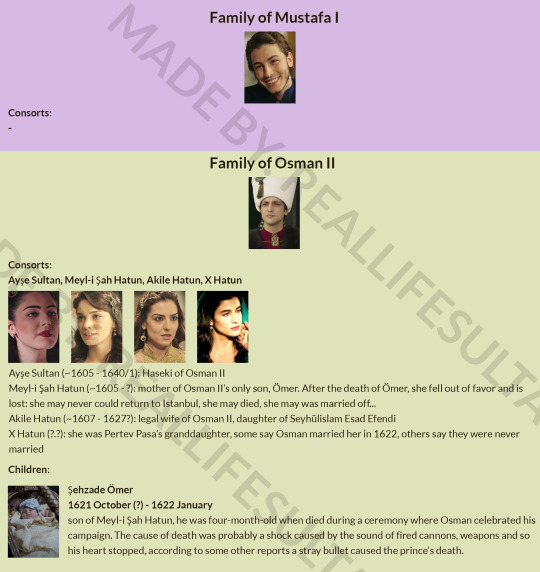
Family of Mustafa I and Osman II. So I was like “I dont make trees for these sultans because it would be too short”, however in the end I decided to make it, because I included all sultans so far, so I must include them as well!
#mustafa i#osman ii#sehzade ömer#şehzade ömer#ömer#omer#ayse sultan#ayşe sultan#ayse#ayşe#meylişah#meylisah#meylisah hatun#Meylisah sultan#meylişah sultan#meyl-i Şah#meyl-i sah#akile#akile hatun#Pertev Paşa
30 notes
·
View notes
Text
Best of “Daily Sabah”
I promised this once and I think it might be surprising how it works in some way.
Of course after only like five minutes on the page I always feel disgusted by the hate towards Armenians, Greeks, Jews, conspiracy theories and shocked by the lack of self awareness with Evil Decadent West and great Turkey which has no problems whatsoever, only getting greater (basically Russian propaganda ,just exchange Ukrainians, Poles etc. for Armenians, Greeks, Jews, while EU and USA stay the same).
Let’s move to the series we will discuss - the portraits of historical figures from Ottoman history.
There are several rules that apply to all biographies:
1. All Ottoman padişahs were practically perfect by default and there was not a single one you would call bad, including those that used to be heavily criticised, like Ibrahim. A lot of them are child prodigies. If anyone is guilty of anything, it’s “greedy courtiers” (read: not from the sacred Imperial Family, unless some are misguided by them, like Şehzade Mustafa or those who murdered Sultan Osman).
2. All the women knew their place and were “intelligent and benevolent”. Usually are mentioned in one sentence of padişah’s bio saying they were beloved consort, insert the “intelligent and benevolent” stock phrase bit and number of kids (plus highlight that the padisah in question did not spend much time in harem, was monogamous or near it, and that women had small influence on him, everything else is slander). Basically they only took part in charity and defended their padişah husband or son, but God forbid were ambitious,, led factions and schemed or got involved in real politics - this is slander.
3. Normalization of violence - all opposition to current or future padisah is bad by default and all people who were executed deserved their death and it was always for the benefit of state. No what ifs, but also no evidence;) No, no scheming women as well, look parts 1 & 2. If the sovereign decided so, it must be the good decision for the state. Only greedy courtiers can make bad decisions. And Sultan Ahmed, who abolished the fratricide law and committed the biggest mistake ever. Fratricide was Constitutional (xD, yes Mehmed II wrote constitution) and basically involved no decision on the part of padişah - it simply had to be that way, no need to question it. It’s Constitution, after all. Going all automatic. No choice. Which is actually not true, but the simplified explanation of fratricide law, which is often circulating around even outside propaganda circles ( I might make a separate post on the topic one day tbh). Firstly, the law was not “ancient” or “eternal” or even “ several centuries old”. It was used as part of multiple civil conflicts emerging during Empire’s earliest era where the was no central power established and then condified by Mehmed the Conqueror in second half of 15th century. Moreover, it was not included in laws easily because fratricide is a huge sin in Islam. This is why the whole wording contains the phrase “most ulema agreed to it’. By no means it was unanimous and non-controversial matter. And the original intent was to make each padisah decide based on current situation and whether he deemed it necessary for maintenance of order (hence original wording “is acceptable”, not “must execute”.) Secondly, it was established in special moment when the state was still consolidating and beginning transformation to sedentary. Hence, it was used as tool in times when the state and its establishments were dispersed to determine central administration and was also to be used as tool in civil wars to end them.
Since the law clearly was shown to be outdated pretty soon (during Suleiman sedentary sultanate was pretty firmly established), and after Murad III conducted first slaughter of all his brothers living in palace in capital in 1574, the criticism among people was growing, and reached its climax when Mehmed III executed 19 brothers. It was different when princes were executed in provinces in aftermath of civil war, and it hit differenly when elder prince just killed his brothers automatically after ascending the throne (again it happened for the first time in 1574 ).
Presenting something as “constitutional” or “rooted in our statehood and laws since forever” erases the choice and culpability of a particular padisah. It enables to absolve him of individual decision and redirecting attention towards a bigger concept - the utmost important of statehood and order over individual, including padisah. Similarly, it never questions the concept of “order” as determined by a padisah in a particular context (brings to mind quote from MC Ibrahim - “Truth? Truth is what padisah wants believe”). It goes without saying this view is also closely connected with victim blaming. Moreover, the way they mention executions always places emotional focus with the poor monarch who just had no other choice but it hurt him so.
Erdo propaganda does not deny fratricide law existed and does not deny all sorts of violence in general - it chooses to normalize it instead and treat it as unavoidable and serving a higher purpose. I’ve seen from Erdoğan supporting Turks multiple statement in vein “This is how world works, accept it, war is part of life, everyone does it, only the strongest will survive” or applauding it “Sultan Murad was fearful and killed all those traitorous trouble stirrers, they all feared him, thanks to this he saved the state”. Normalization of violence stresses everyone is engaged in violence and erases difference between oppressor and victim.
Normalization of violence is important for contemporary authoritarian regimes, including Turkey. Making people indifferent to violent acts by showing this as normal process of human life and necessity. Same with victim blaming and not questioning whether the person persecuted by regime was punished justly - “it was necessary”.
4. Ottoman system was perfect and was never in decline. We all know the famous “X ruined Empire”, but it does not come from Neo Ottomanists propaganda. It’s a take coming from (outdated) historiography by Young Turks (who were also nationalistic and misogynistic). The explanation is simple - for Neo Ottomanists the whole system was absolutely perfect, the system of succession also worked pretty well and there were no bad Sultans, everything was going great, only traitors supported by foreign agents, Free Masons and Zionists caused the collapse of Ottoman Empire. The system itself was chic and it was basically fairyland (back to point 2 with exemplary royal family always abiding by rules of Islam and patriotic feelings). Again, all crises were caused only by greedy subjects who caused problems to the Imperial Family and all the evil forces from outside. Nobody could cause the decline because in Neo Ottomanists’ view there was no real crisis, and the biggest danger came from outside.
This is why Sabah’s pieces might look alluring with their “pretty nice” and sympathetic descriptions of Imperial women and even give thus give impression of not being connected with Neo Ottomanists... but they are. Same with certain revisionism giving the allure of “hot takeism” or praising democratic & modern values, but by suggesting that the system of absolute monarchy not only promoted them, but even.. invented them (yes, they go as far). Positive propaganda is definitely more present in the historical series of articles.
Let’s move to examples:
Hürrem Sultan (Source)
Süleyman ruled for 46 years, people wanted to see Şehzade Mustafa take the throne instead of his elderly father. The close circle of Şehzade Mustafa encouraged him to seek power, and after some time, he began to talk at times as if he were the sultan. This made Süleyman suspicious about a possible plot against him, and when the sultan acquired evidence about the betrayal of his son, he executed Şehzade Mustafa. It is said that Hürrem, who wanted her children to sit on the throne after Süleyman, encouraged the Sultan to kill his own son. Some historians also blame Hürrem and her son-in-law Rüstem Pasha for encouraging Süleyman to kill his grand vizier, Pargalı İbrahim Pasha, and forgetting to mention what Şehzade and the grand vizier did to deserve this end. Perhaps Hürrem was not sorry about these incidents and perhaps she was happy with the results. However, she was not to blame for the executions of Şehzade Mustafa and Pargalı İbrahim Pasha. Mustafa had proven that he was not worthy of the Ottoman throne with his reckless behavior. Although he was courageous, he lacked two qualities that were more important: patience and cautiousness. Moreover, neither Süleyman nor Hürrem hesitated to execute their son Şehzade Beyazid when he stirred up a riot. During those times, the Ottoman sultans did not hesitate to sacrifice even their loved ones for the unity of the empire and the people – one of the reasons why the Ottoman Empire stood for centuries.
Do I even have to point out the obvious fact Hürrem could not execute Bayezid because she had been dead by this point? (and not like she would ever, she did intercede for his sake and it’s pretty certain he was the prince she supported for the throne... actually books which state that she supported Selim usually provide no evidence, only base it on assumption that “Hürrem ruined Empire” ... which is again a narrative not propagated by Neo Ottomanists but by Young Turks historians in the past, and it assumes she had to promote the son which was weak and easy to dominate, to make use of the badly working system).
In short: she executed her son but it was awesome. Very.. interesting approach. Putting on her something she could not even physically do, but as something that was actually praiseworthy.
Obviously, there is no questioning of Ibrahim’s or Mustafa’s guilt. “Forgetting to mention what they did” and not following with particular examples and evidence & sources backing up the claims. Going from “evidence of betrayal” to “Mustafa was reckless and impatient and this is why he didn’t deserve the throne” in the same article. So did he betray or was punished for imprudent actions? Very enlightening. And Suleiman’s only problem was getting old.
They are still not claiming outright rebellion, though, of course it will pop up soon.
Kösem Sultan (Source)
Kösem Sultan was brought to the Ottoman palace as either Bosnian or Morean slave and given the name "Mahpeyker," meaning moon-like face in Persian language for her beauty.
The first source I’ve ever seen that does not at least mention the Greek claim. Hmm.
She practiced Sufism with her highly religious husband. Mahpeyker lived a quiet and peaceful life and looked after her children.
That’s her whole Haseki career according to Sabah🤦♀️ .
Yes, they say Kösem was good and should not be blamed for anything, but at the same time do a huge disservice by undermining her actual political skill and influence. They again focus mostly on her charity and motherhood, mostly removing her as a political agent otherwise. The description of Kösem's murder criticizes the murderers, but again removes Turhan’s (or Terhan’s xD) agency and actual role, instead of attributing actual action on the part of “bureaucrats supporting Terhan”. Typical narrative. Always only the bureaucrats. Never a member of the royal family (TBF in same vein they often devoid padisahs of agency at times, but at least then they compensate it by giving them other ‘great’ counteractions and ‘smart moves’ in addition to that).
Even today, fervent supporters of women's rights accuse her poking his nose into state affairs by saying that she put her "hennaed" fingers on state affairs. The period of "Sultanate of Women" in the Ottoman history was the outcome of a total political necessity. It took a short period of time and brought many benefits. Mahpeyker Sultan was always described as an ambitious woman, yet it is rarely mentioned that she took action with her patriotic feelings. Indeed, it was a sacrifice for Mahpeyker Sultan, whose sorrowful days were more than happy ones in her life, to carry heavy state affairs on her naïve shoulders at a troublesome period.
Now the people who slander Kösem are “fervent supporters of women’s rights” (xD) who want to discuss her contribution to the actual ruling of the state. Oh they finally admit SOW existed (read later, they sometimes deny its existence), but again “total necessity”; no women would ever have political ambition, she can only be forced to do it.
Her “naive shoulders” just tops it. Yes, do not slander her - she didn’t make good decisions but it was because she was naive. Hmmm... Yes great doing her actual justice, thanks. Maybe admit she could actually make sound decisions as a real politician?
And the Mehmed IV article suggested those who murdered her alleged (note this word choice in particular) she was taking part in state matters... according to them, neither Turhan nor Kösem truly ruled during that period, it was again a bunch of courtiers.
Now let’s move to the “Mighty sovereigns of Ottoman Throne” series. I will focus on padisahs from MC/K era, but all articles are “gold”.
Selim Yavuz (Source)
Some viziers and soldiers from the center wrote a letter to Şehzade Korkut, whom Sultan Selim loved very much and had assigned as the governor of Manisa. They stated that they wanted to see him as sultan and that the conditions were ready for this. Although it is said that Sultan Selim had these letters written to test his brother, he actually did not need such an action. Instead of informing his brother about the situation, Şehzade Korkut accepted the offer. Thereupon, he and all the other şehzades were executed. It is said that Sultan Selim was very upset when he made this decision for a greater purpose.
Poor little cutie 😭
It is said that he slept very little. He was not fond of harem life either. His only known wife was Hafsa Hatun, the daughter of the Crimean Khan Mengli Giray. She had a son named Şehzade Süleyman and six daughters.
Of course, though in this case, I might agree he was not much into harem life. Plus outdated info on Hafsa’s origins.
Suleiman (Source)
According to historic documents, he was generous, elegant, modest, dervish-spirited, devoted to his religion and did not act impulsively or did not do anything without consultation. He put the interests of the nation above everything, even his family. The criticism about him, especially the fact that he was under the influence of his family, are baseless allegations.
Like his father, he did not pay much attention to the harem life. His son Mustafa, born from his first wife Mahidevran, started to prepare a rebellion against his father after being persuaded to do so by those around him and was executed in 1553. From his second wife, Hürrem, a daughter named Mihrimah and sons named Mehmed, Selim, Bayezid and Cihangir reached adulthood. Mehmed, who his father loved very much, died of smallpox in 1543 at the age of 22. Cihangir also died in 1553. Şehzade Bayezid rebelled against his father and took refuge in Iran after being defeated. He was executed in 1562.
Basically whole article on absolute perfection and paragon of virtue. Again, sons were guilty and misguided. Women had no influence. This is the only mention of Hürrem in the whole article. Later she and Mahidevran are only referred to as “his two wives” to stress he was under no influence of them “- Historians say that his two wives and those around them were political factions and accuse the sultan of being under the influence of the second faction”. Plus Ibrahim had to die because he had too close relationship to the Sultan, but it was still not Sultan’s fault of giving him all these ranks. And both Mustafa and Bayezid were rebels, which in Bayezid’s case is true (but they do not discuss this in depth anyway), but with Mustafa again no evidence, not even mentioning any details because who cares. Guilty as charged.
There is not a single evidence Mustafa ever rebelled, even from sources sympathetic to Suleiman (or even negative stuff said on him in sources).
Even those who try to decipher what influenced Suleiman’s decisions and try to understand his state of mind and how some actions of Mustafa could be read by him in certain way do not claim that Mustafa ever rebelled, like Zahit Atçil in his famous piece “Why did Suleiman execute Şehzade Mustafa?”. Atcil mentions Mustafa tried to gain support (e.g. got into diplomatic relations with Venice), but afterwards stresses that “Forming coalitions and seeking allies were perfectly legitimate moves for a candidate to the throne, and supporting a particular claimant constituted a way for various social groups (e.g., janissaries, viziers, scholars, middle-class citizens) to participate in imperial politics.” Atcil also adds that all candidates did seek for allies, only Mustafa was far more successful than his half-brothers in securing support. Mustafa in the letter to certain Ayas Pasha (not that one ;) mentioned yes he did want the throne, but stressed that it would be only after his father’s death, which sounds very much like MC Mustafa.
Ok correction they also mention Hürrem when they talk about Suleiman’s building endeavours and that he commissioned “complex in the name of Hürrem Sultan”. Yes there are some doubts how much influence Hürrem could have in what that complex turned out to be, but this removes ALL of it. It’s only Suleiman’s and he named it in her honour.
And this is again just hilarious:
An anecdote is also told about this. During the Cold War, Nikita Sergeyevich Khrushchev, leader of Soviet Russia, saw Sultan Suleiman in his dream. In this dream, he asked the sultan: “You were in Hungary for almost two centuries. Before we were even in the country for 10 years, the people revolted. How did you manage that?" The sultan gave a historical answer: “After we conquered Hungary, we made Hungary our homeland and settled down. We did not require the people to speak Turkish. We did not declare the day we conquered the land as a Hungarian national holiday as you did.”
And all the references to how modern and pretty much democratic Suleiman’s rule was, sooo like the French Revolution! I don’t even have strength to delve into it all, but one point is clear - they do focus on the positive and actually do not portray democratic values as bad at all - they just twist everything to suggest such very absolutist system was actually protecting these values.
Selim II (Source)
The essay on Selim of course promotes similar view with respect to his father and his brothers, while Selim’s most admiring trait was obviously “obedience”. Plus, the piece removes Selim’s agency in the whole conflict with Bayezid. And according to sources he did scheme against his brother and reading letters contained e.g. in New Perspectives on Safavid Iran (”Am I my brother’s keeper? Negotiating corporate sovereignty and divine absolutism in sixteenth-century Turco-Iranian politics” essay by Colin Mitchell), we can see he actively participated in negotiations with Shah Tahmasp to have Bayezid executed.
Indeed, his brothers Mehmed and Cihangir fell ill and died. The ambitions of Şehzade Mustafa and Bayezid, who rose up against their fathers, cost them their lives. Şehzade Selim attained the blessing of patience and thus proved that he was the most worthy candidate for the throne. Patience is the most precious virtue of a statesman. Actually, his father was also inclined toward supporting Şehzade Selim to succeed him for the throne since he was an obedient son. He participated in expeditions with his father.
Now hold on truly tightly because shit gets really, really wild. Suddenly we learn Ottoman Empire in 16th century was run like modern democratic monarchy and that the Sultan even prevented colonialism! Not like Selim was simply not much into state affairs (which is no crime, but c’mon this explanation...). Again, I agree Selim used to get some unnecessary wank by historians, but Sabah goes wayyy into opposite extreme (and not only Sabah tbh).
Preventing colonialism
After ascending the throne, Sultan Selim II left government affairs in the hands of his prudent vizier and son-in-law, Sokollu (Sokullu) Mehmed Pasha. He was like the rulers of today's democratic European monarchies. But he was always alert for the ambitions of those around him. [..,]
Upon the request of the Astrakhan sultan for help, the Russo-Turkish War, or Don-Volga-Astrakhan Campaign of 1569, was launched. It aimed to connect the Black Sea and the Caspian Sea by opening a channel at a point where the Volga River flowing into the Caspian Sea and the Don River flowing into the Sea of Azov come very close to each other, thus providing protection for Turkistan against Russian expansionism. The project was started; however, it could not be carried out due to winter and other reasons.The Crimean Khan Devlet I Giray, to whom Sultan Selim II sent aid, invaded Moscow and forced the Russians to make peace. Thus, he prevented Asia from falling into the hands of the colonialists. The Suez Canal project of the sultan, who wanted to strengthen his political and commercial dominance in the Indian Ocean, was not realized.
Again, the Russian Empire was seen as a significant foreign force that caused the collapse of Empire, hence that focus. Young Turks actually strove to have good relations with USSR.
Never mind the contradictory statements -”we prevented expansionism and colonialism by launching war” and again preventing colonialism while “wanting to strengthen political and commercial dominance in the Indian Ocean”. Aha.
It was allowed again during the reign of Sultan Selim II to compensate for the tax loss. As a matter of fact, non-Muslims can buy, sell and drink wine in an Islamic state as their religion allows it. In the Ottoman Empire, there were pubs belonging to non-Muslims. The government used to collect taxes from them, and Muslims could not enter these places. Some, who were unaware of this rule, thought that the sultan was fond of alcohol.
Some weird ass explanation why Selim could not be drunk. I find it hard to even follow this train of thought. Usually, it’s simple - no Muslim Caliph can be drunk because Islam forbade it and they were all paragons (thanks to certain charming person on IG explaining this train of thought to me and my friends).
He was not fond of harem life. His only beloved wife, Nurbanu Sultan, was one of the most benevolent women in history. She had Mimar Sinan build the Atik Valide Mosque in Üsküdar and its complex and the Toptaşı Bimarhane (mental hospital), which today serves in Bakırköy. There are many other charities she had commissioned. She brought water to Istanbul.
The sultan had eight sons named Murad, Mehmed, Ali, Süleyman, Mustafa, Cihangir, Abdullah and Osman and four daughters named Esmehan, Gevherhan, Fatma and Shah Sultan. The descendants of Esmahan's children born from Sokollu Mehmed Pasha and Gevherhan's from Piyale Pasha have survived to the present day.
Again they are contradicting themselves - they state Nurbanu was his only wife and no way he could spend much time in the harem. But then provide all the sons whose mother was not Nurbanu (except Murad of course). Aha.
Murad III (Source)
In some modern sources, his fondness for women is mentioned, which is not true. He lived with his only wife, Safiye Sultan, until the age of 30. He had many children, most of whom died in infancy, and Şehzade Mehmed ascended the throne as his successor.
Of course. Better not list the number of those kids not to make the reader doubt whether one woman could bear them all ;)
Mehmed III (Source)
Although it is said that Sultan Mehmed III was under the influence of his Albanian-born mother Safiye Sultan because of his love and respect for her, this is an exaggeration. When he came to the throne, he had his brothers executed within the fratricidal framework of the organization law of Sultan Mehmed II in order to prevent future revolts under the claim of the throne. This decision, which the sultan made with great sadness, caused great indignation in Istanbul. This was the last application of the constitutional condition.
Again poor cookie had no choice because “CoNsTItuTiONal CoNdItIon” . Of course he was not under influence of his mother. This is the only time a woman is mentioned in this article. Handan and Halime do not exist.
Ahmed I (Source)
Sultan Ahmed is regarded as a well-educated, intellectual and determined sovereign. He refrained from personal addictions and weaknesses. Along with many Ottoman sultans, his intellect developed at an early age. Although he was enthroned when he was a child, he managed to rule with great talent and wisdom.
A child prodigy. Bah, they were all child prodigies.
The sultan was noted for a surprisingly good command of administrative matters and following them up, trying to assign matters to competent people, and directing and controlling his entourage. As soon as he ascended to the throne, the sultan sent women in the palace, including his grandmother Safiye Sultan to the old palace and did not let royal women meddle in politics.
Anyone surprised? If you ask about Kösem, she is mentioned, her kids are listed and she is called you-guessed-it “benevolent and intelligent”. That’s all.
Finally, we come to finale paragraph entitled “Mercy and Disaster”
Almost everyone admits Sultan Ahmed I’s skills and goodwill, but some do not see him as a bright sovereign. This happens to be the destiny of sovereign who ruled during turbulent times and lacked capable aides.
But he was a child prodigy at the beginning of the article?
What made them write the biggest criticism aimed at sovereign? Of course abolition of fratricide, which is deemed “disaster for Empire”. They remark Ahmed was compassionate, but that’s all. Otherwise the move was the biggest mistake. Also note the interlinking between mercy and disaster.
Mustafa I (Source)
We start by several paragraphs bemoaning the end of fratricide and again repeating what a disastrous (though merciful) act it was. They just cannot move on from this and it’s hilarious. They also try to rationalize Ahmed’s decision in several ways:
Sultan Mustafa I, the 15th of the Ottoman sultans, was born in Manisa in 1591 to Sultan Mehmed III and Halime Haseki. When his older brother, Sultan Ahmed I, ascended the throne, he strayed from the customs of previous sultans and did not have his brothers executed for the sake of the public; He didn't touch his brother.
Halime is mentioned by her name and already in the first paragraph! A success.
Plus they stress the “for public” bit for the purpose to show what can happen when you yield to opinion of subjects.
His mother was a smart and strong woman, though not as smart as Mahpeyker Kösem Sultan. She supported her son when faced with intrigues. His mother dictated the sultan's edicts.
Of course smart and going against intrigues. Actually not a single hint of criticism.
Kösem is also lucky to be mentioned as the person who could influence Mustafa climbing the throne! As acting for the protection of her sons, they see it as non-harmful to admit that. Especially since (as we will see) she’s mother of such paragons as Murad and Ibrahim ;)
Osman II (Source)
Osman had genius but he was young. Therefore, he could not properly use his education and genius. He was aware that the world changed and some things were not going well in the country, and he had plans to fix these.
Of course another prodigy.. .
A Polish army of 100,000 people that included Cossacks, Austrians and Hungarians were defeated after a tough battle, and Khotyn fell.
As a Polish person, I tell you Khotyn did not fall. And lying about that was Osman’s own propaganda that also enraged people against him.
In order to ensure the safety of the empire before departing for the campaign, he had his younger brother Şehzade Mehmed, who was one year younger than him, executed as prescribed by the fratricide rule of Mehmed II. Poor şehzade cursed the sultan as: “Osman, just like you deprived me of my life, I wish from Allah that your rule to be short”.
Again, matter-of-fact-tone and stressing it was “prescribed”. Suddenly no bemoaning fratricide was abolished?
Murad IV (Source)
Hold on again please.
When he was just 10 years old, he started dressing as a commoner and wandering around the city, making plans for his future work as a result of the cooperation he would establish with the public. He would keep a list of those he could benefit from and those he would punish.
Yeah everyone allowed 10 year old prince (prodigy) to wander along steets like that. No biggie.
In the aftermath, Sultan Murad forbade smoking tobacco and ordered that the coffee shops, where people used to gather to drink coffee and smoke, be destroyed. The sultan would dress up as a local, mingle with the crowds and have those he caught smoking put to death. It is said that 20,000 people were sentenced to death in this way. As such, many bullies and tyrants were cleared off the streets.
Easy? He executed thousands of his people, but no biggie, they were all bullies and tyrants anyway. And how do we know this? They smoked.
Since his childhood was spent in revolutions, he was used to all kinds of disasters. The feeling of fear was alien to him. In eight years, he ordered the execution of a number of people who were considered untouchable until then, in order to show that there was no power above the authority of the state. Those who describe him as bloodthirsty don't take into account the anarchy of his time and how the people suffered from it. He tried to be a sultan that the public wished for.
Normalization of violence again. And are you talking about the same public he executed (see above)
Sultan Murad used to take opium extracts (morphine) given by the head physician in order to alleviate the pain of the gout disease he was suffering from. This made him feel tired and lethargic. Those who saw him staggering from time to time concluded that the sultan was consuming alcohol. Moreover, he reigned at a time in which alcohol was used for pain relief. The state dignitaries were not fond of the sultan's friends and would accuse them of getting the sultan accustomed to debauchery, which was far from the truth for him.
Again no way an Ottoman Sultan could be ever drunk. They were all perfect Muslims by default. He died from gout, not cirrhosis. No matter what everyone else says. And let’s also make him more sympathetic -you accuse poor cookie of drinking and he was simply trying to alleviate his pain!🤬
Although he was considered to have a harsh stance on political matters, he was tender-hearted.
Sure.
When they list the poets he sponsored, I love how they listed Nef’i without mentioning his ultimate fate ;)
A generation ago, Istanbul, where not a single murder had been committed in a whole year, was in turmoil. Sultan Murad took drastic measures to restore the old order in the most populous city of this world.
Lemme ever believe that no murder happened in the “most populous city of this world” during whole ass year ever.
He established a personal intelligence network throughout the empire. He reorganized the spy organization in Europe and transformed it into what it was during the reign of Suleiman the Magnificent. The most hidden secrets began to reach the Ottoman palace day by day.
He learned about the oppressors and the tyrants everywhere. He was able to execute bullies so quickly while passing through certain cities during his expedition because he knew them all by name.
Yeah his spy network make him watch all his subjects moves closely, but it was again about bullies and tyrants only as always. “Bullies and tyrants and oppressors” emerge so often in this article without calling one certain bully and tyrant and oppressor by that term. Whoop.
The rebels used to threaten to depose him with his brothers at every opportunity. He had three of his brothers executed, two during the Yerevan and one during the Baghdad expeditions, according to the old constitutional tradition. He left behind a less competent brother, from which the Ottoman dynasty continued.
Again “old cOnStItUtIonAl tradition” plus obligatory matter-of-fact tone. Better not remind our readers our earlier bemoaning of apparent abolition of it anyway? At least this time they spared us the stressing of how sorry and sad the little hapless woobie was.
No woman is mentioned in this article, only Kösem is mentioned next to Ahmed as Murad’s parents in opening paragraph.
All the long descriptions of his physical strength and what not our redneck could do, what distances he could run etc. let me no waste time on that please. Let’s move on to Ibrahim.
Ibrahim (Source)
Even textbooks describe this sultan as Deli Ibrahim, or Ibrahim the Mad. In fact, this is the imputation of 20th-century historians.
Do not get me wrong - tales about Ibrahim’s madness and his actions were exaggerated (the famous drowning of his concubines myth), but it’s hard to deny he had serious mental problems and it’s particularly ridiculous to maintain he only began to be called mad in 20th century (read: by Young Turks historians).
If anything, most tales were invented after his death as part of factional in-fighting and also by these who took part in the coup to remove any doubt that his deposition was a necessary move.
The rumors that Sultan Murad IV ordered his brother Ibrahim’s execution on his final days are not true. On the contrary, Murad sought out his brother before his death, bequeathed him the task of protecting the people and made amends.
Such sweet fairytale. While it is debated whether Murad ordered the execution or not, it’s the first time I hear him making amends and all that sentimental bulllshit.
After donning the turban of second Caliph Umar ibn al-Khattab brought in from the Chamber of Blessed Mantle of the Prophet Muhammad, Ibrahim sat on the throne and prayed: "Oh God! You deem fit a weak subject like me for this post. May you make my nation happy during the days of my reign and make us both content with each other!" This incident is clear evidence that the sultan was not mad.
Absolutely irrefutable proof. A-ha.
Ibrahim was portrayed as a short-tempered and dissolute sultan who spent his days in the palace with beautiful girls, entirely clad in sable fur – a tale everyone believed. At a time when radiators or even stoves were nonexistent, in a humid city such as Istanbul, people living in high-ceiling places and homes used to burn wood in fireplaces. Therefore, almost everyone used to wear fur to keep themselves warm. Unlike today, however, fur was sewn on the inside of robes.
And everyone could afford fur, especially people who starved during this period. A-ha.
The sultan had some relief after Kazasker (chief judge) Hüseyin Efendi of Safranbolu, who was renowned in Istanbul for his "effective" prayers, recited the Quran to him and prayed for him. Hüseyin Efendi, who received much praise and gained popularity because of this incident, also came to be known as a spiritualist hodja (exorcist), leading to an increase in the sultan’s adversaries.
Now even Cinci, a character criticized in all sources no matter POV, gets redeemed.
During the reign of Sultan Ibrahim, there were severe cold spells in which the Golden Horn and even the Bosporus froze. The cold led to increased demand for sable fur, with those who lived in proceeding centuries overlooking the cold and seeing the "sable era" as a period of debauchery. Young Turk-leaning early 20th-century historian Ahmed Refik Altınay also played a role in this. Exaggerated definitions such as “the reign of women,” “the reign of aghas,” or “the sable era” were coined by him.
However, the sultan did not allow for the women of palace, even his mother Mahpeyker Valide Sultan (queen mother), to take part in state affairs. This was why he sent the palace women, including his mother and sisters, into exile. Ibrahim was the last surviving male member of the Ottoman dynasty, and his efforts to have children were considered debaucherous. It is said that in his final days, he devoted himself to entertainment, however, this did not have a negative effect on state affairs since it was personal.
Yes, no woman had any influence during Ibrahim’s reign, including Kösem. In a way, maybe the only thing she did according to Sabah’s articles here is she might have influenced change in fratricide law, which was a bad thing anyway, since it came from her motherly instincts (typical woman and moreover naive as we know already). She had no political agenda or political career apart from royal motherhood.
Like I don’t even have strength pointing out how many sources deny these “claims” with no evidence provided whatsover.
Instead we have them dismiss the mere idea “Sultanate of Women” ever existed.
And of course they have to point out “Young Turk” invented this term and discussed women’s involvement in politics. It is worth pointing out that Altinay wrote about Armenian genocide which was committed by Young Turks and even today the ruling regime which is anti-Atatürk inclined denies it (and not only them, many Kemalists do too, sadly).
It’s true though that Altinay put many nonsensical accusations towards Ottoman women (which was also characteristic of time period, his work Kadinlar Saltanati began to be published in 1916 and it was truly first such work in Turkey), but what drives Sabah and Neo Ottomanist mad first and foremost is that a) he mentions they actually had the influence and were important political actors b) it means their great padisahs were actually influenced by women.. which constitutes great offence for these prodigies and paragons c) suggests mothers of their padisahs could be human and also do some bad things.
Women are not mentioned anymore in the Ibrahim article except Turhan in one sentence - “The late sultan’s spouse Hadice Terhan Haseki is regarded as one of the most famous and highly qualified women in Ottoman history”. Yes they spell Terhan both here and in the Kösem article all the time. No mention of her regency. No mention of Telli Humasah, Saliha Dilasub, Sekerpare, etc. whatsoever.
The sultan’s intolerance to injustice and his inability to keep his feelings secret decreased his supporters and drove them away.
His last Grand Vizier Hezarpare Ahmed Pasha did not shy from lying to the sultan regarding foreign affairs. Thus, the sultan did not have a single useful soul in this entourage, with sycophants and hypocrites bringing about the sultan's end.
Basically his only crime was that he was too good. Again only the evil courtiers around are at fault and caused his demise.
The coup’s description is of course totally biased in Sultan’s favour and framing him as absolutely completely innocent, and even the executioner did not want to do it. No mention of fetva being issued against Ibrahim for breaching so many laws. No mention of all the disruption and difficult situations of commonfolk during Ibrahim’s reign. No his reign was stable and everything was all right.
Sultan Ibrahim is described as generous and compassionate. He donated a lot to the poor. He paid attention to ensure the treasury revenues were collected regularly, spent properly and that wages were paid without delay. He used to covertly roam the city and monitored the people’s needs on the spot.
For the conclusion, let’s look at the Abdülhamid II article:
Sultan Abdülhamid always used civilized methods in foreign policy and acted in very subtle and clever ways. He understood the importance of propaganda, which is the most effective means of power of our time, and tried to use it in the most effective way for not offensive but defensive purposes against imperialist and colonialist policies.
Propaganda is actually anti-imperialist and anti-colonialist. A-ha.
Knowing what he could do and what he could not do, he followed an honorable path in politics. He was not a person of minor ideas and circles, and acted with lofty purposes like his ancestors. In this way, many political dangers were eliminated with small concessions.
From the collapse of the great empire within 10 years after his departure, it is clear that Abdülhamid extended the state’s life by 30 years with his mistakes and merits. The Ottoman Empire, one of the five largest in the world at the time, turned into a third-world country in the next 10 years.
Yeah only problems in paradise only appeared after Ottoman Empire fell, earlier it had been all dandy and all sultans had been dandy.
#ottoman history#history#magnificent century#muhteşem yüzyıl#idk how to tag it truly#but MC fandom should be most interested anyway#yes I am braindead now
39 notes
·
View notes
Note
Oh, I think I didn't ask my question correctly, I meant Bayezid son of Suleiman.
The fate of the daughters of Prince Bayezid is unclear. However, I did get a little information about Bayazid's daughters.
A book was written in 2019 by Mustafa Altun. The name of the book is Yüzyıl Dönümünde Bir Valide Sultan: Safiye Sultan'ın Hayatı ve Eserleri.
In the final part of the book, the list of rights of harem women is mentioned.
Hatice Sultan, the daughter of şehzade Bayazid, received salary in 1576. She was probably a widow at this time or had not married yet.
Ayşe Sultan, another daughter of Bayezid, is buried in Ayub Sultan.
The year of her death is hacked on the tombstone (1601). Ayşe Sultan's wife, Ghazanfar Pasha, is mentioned on the tombstone. I did not find any information about Bayezid's other daughter Mihrimah Sultan, I think Mihrimah was the second name of Hatice Sultan or Hanzade Sultan (Hanzade mihrimah sultan).
Another interesting point mentioned in this book is about Fatma Sultan, daughter of Salim II. Fatma received salary in 1582. However, we thought that he died in 1580.
I'm a little confused what do you think.
I think the harem documents give us more interesting information. They are more accurate.
Oh I’m sorry, I didn’t understand 😭
Thank you for telling us about this dissertation (it’s not a book). I found a couple of pictures of Safiye I had never seen before!
Now, moving on to Bayezid’s daughters. The author of the dissertation gave us a couple of interesting harem registry pages:

So, here we see that Bayezid’s daughter Hatice lived in the harem at the time (January-March 1576).

In 1981-82, though, she is not present anymore so she must have died or married.
(The Ayşe mentioned in the harem registers is not Bayezid’s daughter but Ayşe Hümâ-Şâh, identified from her husband, the deceased Ahmed Pasha)
According to Qutb al-Din Muhammad, a man sent to Istanbul by the chiefs of Mecca and Medina for a diplomatic mission, Hatice was 8 years old in 1558 so she must have been born around 1550.
[Bayezid] was a cultivated, perceptive and clever person possessing a good nature, humility and a love for what is good, as well as boldness, audacity and courage. His male offspring are Prince Orhan, who is the eldest of his children and who is strikingly handsome, Prince Osman, Prince Mahmud and Prince Abdallah. His daughters include Princess Mihrimah, the eldest of them who was then eleven, Princess Hadice who was eight, and the princesses Aişe and Hanzade. They are [all] the issue of different mothers, except for the princes Osman and Mahmud, who are full brothers.
In this excerpt, he also talks about a Mihrimah Sultan, the eldest daughter of Bayezid. So no, Mihrimah wasn’t the second name of another princess. According to Öztuna, Mihrimah married Muzaffer Pasha, who was governor of Kıbrıs from 1570 to 1592, when he was moved to Lorestan until his death, a year later. Mihrimah must have accompanied him, so that’s why she doesn’t figure in harem registers.
It is certainly interesting that Fatma Sultan binti Selim II appears in a harem register dated 1581-82 but we don’t have the original of this harem register and we don’t know how exactly these women were called. If Dumas hadn’t added the original and the transliteration at the end of her dissertation we wouldn’t have known she had made mistakes in it (I’ll refer you to this ask). Also no, harem registers are not necessarily more accurate. They’re valuable sources, yes, but sometimes the clerk made mistakes (here).
About Bayezid's daughter Ayşe, I don't know anything more than what Öztuna said in his book: she was married to Hoca Ali Pasha and had with him Sultanzade Mehmed Bey. Unfortunately I don't have the source to the claim she married again (Haskan, Mehmet Nermi (2008). Eyüp Sultan tarihi, Volume 2)
#ask: ottoman history#fatma sultan daughter of selim ii#ayse sultan daughter of sehzade bayezid#hatice sultan daughter of sehzade bayezid#mihrimah sultan daughter of sehzade bayezid
6 notes
·
View notes
Text
》 Mahfiruze Sultan 《
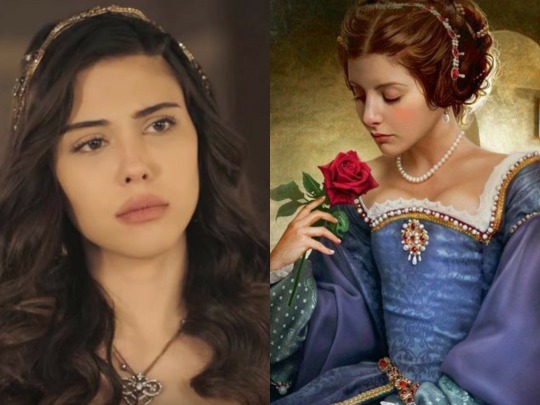
Gerçek adı : Hansuret-Bikeç
Doğum tarihi ve yer : 1590 / Kafkasya ( Labe nehri civarında )
Ölüm tarihi ve yer : 28.10.1620
Babası : Prens Alkas Çerkassky
Annesi : Feride Hatun
Ağabeyi : Janhot Bey
Kardeşi : Şahincah Hatun, Ali Bey.
Eşi : 1 Ahmed
Evlilik tarihi : 8 Ocak 1604
Çocukları : 2 Osman Hatice Sultan Hanzade Sultan Şehzade Bayezid Şehzade Hüseyin Şehzade Süleyman Zeynep Sultan
~~~~~~~~~~~~~~~~~~~~~~~~~~~~~~ Real name: Hansuret-Bikec
Date and place of birth : 1590 / Caucasus ( around the river Labe )
Date and place of death : 28.10.1620
Father: Prince Alkas Cherkassky
Mother: Feride Hatun Older Brother: Janhot Bey Brother: Şahincah Hatun, Ali Bey.
Spouse: 1 Ahmed
Marriage date : 8 January 1604
Children: 2 Osmans Hatice Sultan Hanzade Sultan Sehzade Bayezid Sehzade Hussein Sehzade Suleiman Zeynep Sultan ~~~~~~~~~~~~~~~~~~~~~~~~~~~~~~ Tarihçi Peçevi, Mahfiruz'u Şehzade Mehmed'in annesi olarak gösterir. Ancak o zaman Şehzade Mehmed'in doğum tarihi 8 Mart 1605 değil 3 Ağustos 1605 olmalıdır. Ayrıca 1611 sefir raporuna göre Mahfiruze Sultan Übeyde adında bir şehzade doğurmuştur. Aynı yıl Şehzade Übeyde vefat etmiştir.
Historian Peçevi indicates Mahfiruz as the mother of Şehzade Mehmed. But then, Prince Mehmed's birth date should have been August 3, 1605, not March 8, 1605. In addition, based on the ambassador report of 1611, Mahfiruze Sultan gave birth to a prince named Übeyde. Şehzade Übeyde passed away in the same year.
~~~~~~~~~~~~~~~~~~~~~~~~~~~~~~ Mahfiruze Sultan beyaz tenli ve uzun boyluydu. Beline kadar uzun kumral rengli saçlara sahibti. Gözleri firuze rengindeydi.
Mahfiruze Sultan was white-skinned and tall. She had long auburn hair up to her waist. His eyes were the color of turquoise.
#mahfiruze sultan#magnificent century#kosem sultan#muhteşem yüzyıl#muhtesem yuzil kosem#mahidevran sultan#circassian#ottoman empire
18 notes
·
View notes
Text
Which MC/MCK Character Belongs To Heaven? A Tier List
(All celestial realms only have three circles because I am lazy. Haven’t seen season 2 of Kösem in full, so I didn’t dare to judge. Also, this is about actual morality, quality as a character, as well as about how much I like them.)
Heaven 1st circle (second only to Jesus in God’s eyes): Cihangir, Gülnihal, Leo, Bülbül aga 2nd circle (mistakes were made, but overall we’ve canonized worse people): Anastasia!Kösem, Afife, Daye, Gül aga, Matrakçi, Sadika, Gölge, Sayeşte, Hüsrev pasha 3rd circle (heaven is half-empty anyway, I guess you’ll do): Bayezit (MC), Isabella Fortuna, Armin, Beyhan, Isabella Fortuna, Şeker aga, sultan Ahmet, Mehmet Giray, Mihrünissa, sultan Mustafa, Zülfikar
Purgatory 1st circle (a few months and like one forgiven murder from heaven at most): Hatice, Ayas pasha, Ayşe (MC, season 1), Cevher, Ebu Suud, Efsun, Firuze, Lokman aga, Nigar kalfa, Sümbül, Cennet, Derviş pasha, Handan, sultan Osman 2nd circle (your sins don’t outnumber the times you made this show infinitely better by your mere presence): Hürrem, Mahidevran, Fatma sultan, Mercan, Nurbanu, Şah, Fahriye sultan, Gabriella de Sfeo 3rd circle (I hereby sentence you for being a boring bitch): şehzade Mustafa, Aybige, Dudu, Elif, Esma, Fidan, Helena, Nurbahar, Nazli, Nilüfer, Atmaca, Halil pasha (MCK, s1), Iskender, Yavuz, Zümrüt aga, Fahriye kalfa, Rümeysa, Ayşe (MC season 3), Hadim Süleyman
Limbo (Who? I mean, those I don’t remember well enough): Alvise Gritti, Defne, Iskender pasha, Pedro, Anne of Poland, Gazanfer, Canfeda, Gracia Mendes, Kara Ahmet pasha, Lala Mustafa pasha, Piri pasha, Sinan pasha, Sokollu Mustafa, shah Tamhasp
Hell 1st circle (Satan has a super rad party here and guess what, you’re invited): Fatma (MC, seasons 2&3), Gülşah (see, it’s hell cause they are here together), Rüstem pasha, Safiye, Dilruba, Halime, Davut pasha, Menekşe, Şahin Giray 2nd circle (your only sin is being annoying but boy have you sinned): Mihrimah, s1!Kösem, Esmahan, Huricihan, Nazenin, Taşlicali Yahya, Ahmet pasha (MC, season 1), Haci Mustafa, Hümaşah (MCK), Katerina (MCK), Kiraz aga, Mahfiruz, Mahfiruze, şehzade Mehmet (both) 3rd circle (Fuck you. Just fuck you.): Ayşe Hafsa, Gülfem, Bali Bey, Barbarossa, Louis II. of Hungary (the character, not the historical king whom they absolutely butchered, asjgh...), Meleki, Kuyucu Murat, Zal Mahmut
Superhell (for all of your gay crimes: Ibrahim pasha, Süleyman, Lütfi pasha (he’s not gay, but he is probably homophobic, so this is a double superhell for him), Reyhan aga
24 notes
·
View notes